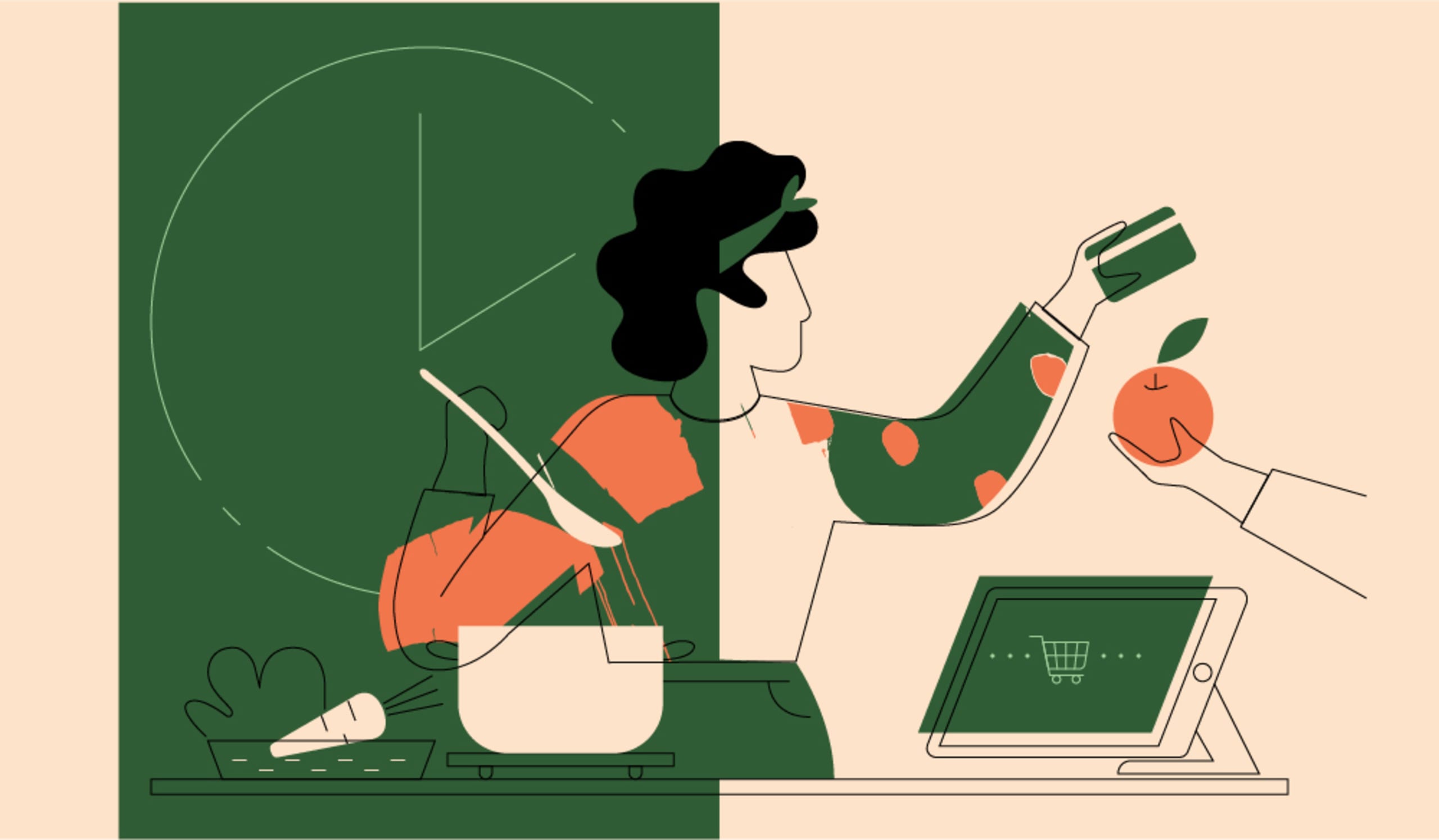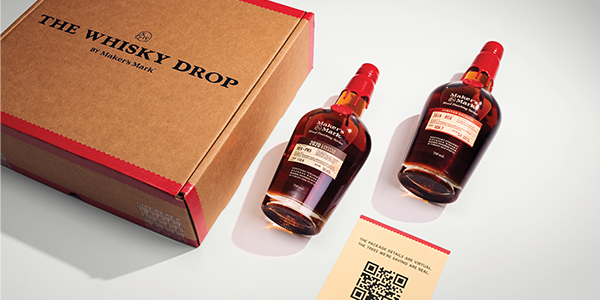
Brand experience matters across all channels
The hybrid shopper
The experience a consumer has while shopping can heavily influence their overall perception of a brand. With evolving shopping behaviors and increased options for purchasing (online, in-store, pick-up, delivery), brands must strategically consider how to deliver different ways of shopping that meet a multitude of consumer needs. It would be great if consumers fit neatly into just one of those categories of shopping – but we don’t. We seek a hybrid shopping experience.
This concept of the “hybrid shopper” isn’t really new – and it describes nearly all of us. If you shop online sometimes and you shop in stores sometimes, you’re a hybrid shopper. And though e-commerce heavily contributed to the rise in usage of this new marketing-jargon-word, it’s not a totally new concept. We used to sift through Sears, LLBean and JCPenney catalogs and order something through snail mail. (Maybe this doesn’t apply if you were born after 2000, but you can use your imagination.) We were hybrid shopping before we even knew it!
How’d we get here?
So if the hybrid shopper isn’t really new, why are we talking about it more?
Online shopping had already gained significant momentum well before the pandemic, but COVID-19 quickly intensified this phenomenon, with share of online retail sales jumping 3% in the U.S. from 2019–2020. This number may not seem dramatic, but the growth from the year before was just around 1%, and when you’re talking about billions of dollars – well, it’s a lot.
This rise, of course, makes sense. As in-person spaces shut down and concern over public health soared, we found ourselves looking for ways to keep ourselves and our families safe from COVID-19.
And brands responded – with enhanced omnichannel shopping and new ways to receive communications, products and services from the comforts of our home:
Grocery stores enhanced their delivery and pickup options, with huge increases in usage in 2020 and continued growth in 2021.
Telehealth usage soared as patients avoided doctors’ offices, changing the way we traditionally receive medical care.
Restaurants that previously relied on in-person dining were forced to adapt to increased online ordering, takeout and delivery options.
The pandemic illuminated the unfortunate reality that if brands can’t adapt quickly to the hybrid shoppers’ demanding and evolving needs, they run the risk of extinction.

We’re a demanding group, us consumers
Imagine Nora. Nora loves to cook. Nora doesn’t love the experience of grocery shopping, but like most of us, she has to do it. She enjoys shopping at Whole Foods, but the prices and the location of the store de-incentivize her, so she usually goes to a chain grocery store close to her. She has tried convenience shopping options like Instacart and curbside pickup, which are convenient when her workday is busy and replace the unpleasant experience of grocery shopping. However, she hates when her order is wrong or items are replaced incorrectly – which happens often enough.
Nora demonstrates the complexities associated with the hybrid shopper. It all comes down to prioritization and needs. There are benefits to in-person shopping (picking the exact products you want, accuracy and no delivery fees), and there are benefits to online shopping and delivery (convenience and efficiency). There are also downsides to both.
It’s a brand’s job to figure out how to not only minimize these disadvantages but also to enhance every touch point along the way, because the user experience can be the difference between a one-time customer and a loyal customer.
This doesn’t mean being everything to everyone, and it doesn’t mean being in every space or channel. It doesn’t mean automatically creating an online store if you are a brick-and-mortar retailer and vice versa. It’s about solving problems for customers.
And the smartest brands solve problems.
We don’t mean to brag, but Maker’s Mark is one of those brands. As a widely available, well-known bourbon, Maker’s is a brand you expect to see at liquor stores, at bars and restaurants and online. But how do you bring the “harder-to-find,” more exclusive offerings to customers in a way that feels more premium than shopping at the liquor store?
Our answer: The Whisky Drop by Maker’s Mark, a program that connects the finest Maker’s Mark limited selections to consumers who want to explore the Maker’s Mark brand beyond the offerings available to everyone. The program strips away all inconveniences associated with the pursuit of a finer, exclusive bourbon from a brand they love and focuses on the ideal experience for this type of consumer:
Instead of you needing to actively shop, the brand delivers two bottles of bourbon (one for you and one to share) on a quarterly basis, removing any inconveniences of in-store or online shopping.
Because this consumer is seeking a different experience with Maker’s, we provided additional touch points that reinforce exclusive experiences with Maker’s: priority access to other limited innovations and exclusive perks only available to those investing in the Whisky Drop program.

What’s important here is not that Maker’s just has a subscription program because a marketing blog tells us that we must have lots of channels and touch points as a brand. It’s that the entire experience with your brand is exceptional, and the channels or shopping tactics you employ support that experience.
It all comes down to the brand experience
Whether or not you are a retail brand, the takeaway here is simple: The experience people have with your brand matters. The details matter.
Sophisticated, well-loved brands understand this. In fact, some brands take it a step further to create experiences that fall outside their traditional, owned spaces.
My final example of brand experience excellence is Shinola. It’s a “luxury goods retailer” – maybe you’ve seen its watches or leather goods adorning fancy hipsters. You would expect to find a brick-and-mortar store as well as an online shop for a brand that sells these types of goods.
But Shinola has something else – a hotel that extends its brand into a completely new experience that falls outside the retail space. And it’s not just any hotel. From the second you walk into the space until the time you check out, you are experiencing the Shinola brand at its best – the smells; the dimmed, soft lighting; the ambience; the materials; the fabrics; the uniqueness of the rooms; the perfectly curated artwork. It’s sophisticated but unpretentious. It’s luxurious but not gaudy. It’s somehow trendy and classic. It’s a truly exceptional experience. And, no, Shinola isn’t sponsoring this post.
I bring up the Shinola Hotel example for two reasons.
The first is that the hotel provides a TON of touch points with its brand – touch points that simply couldn’t exist in a typical user or shopping experience. From the second you arrive to the time you check out, you are immersed in style, quality and distinguished service. And by the time you leave, it’s impossible NOT to have an appreciation for the brand.
The second is that the experience it creates with the hotel allows Shinola to connect with a much broader customer group than it might be able to if it just relied on its retail experience alone. People searching for a hotel in Detroit is a larger audience than one looking for a $600+ watch. And if you can win over that audience group through the hotel, you have a much better chance of turning them into loyal Shinola customers.
Enough about Shinola, though. Most brands can’t add hotels into their business models to create a better brand experience. The point is that a strong brand experience is what sets apart great brands from good brands. It creates opportunities to connect in far more emotional ways – which we know is the way you create customer loyalty.
So, think about the hybrid consumer and then… forget about the hybrid consumer. Instead, define what it is your customers need, why they love your brand and the problems you are solving for them – and begin to translate that into a better experience across every touch point.
Interested in learning more or talking about how these concepts may apply to your brand? Get in touch!
)
)